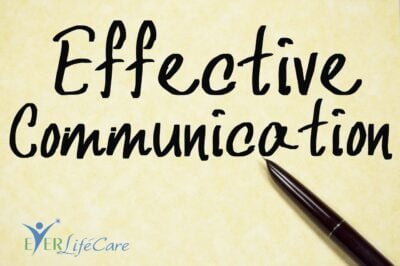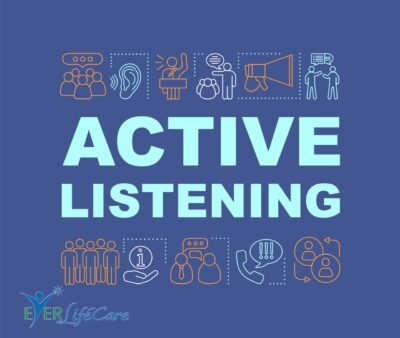Introduction to Communication in Relationships
Effective communication serves as the cornerstone of any meaningful relationship, whether it be personal, professional or familial. It facilitates the essential processes of understanding, building trust and fostering emotional intimacy. By communicating effectively, individuals can bridge significant gaps, ensuring that their needs and emotions are both expressed and comprehended. This foundational element not only strengthens the bond between individuals but also paves the way for a more harmonious and resilient relationship.
However, despite its indispensable role, many people grapple with the intricacies of expressing their wants and needs clearly. This struggle can stem from various sources, such as fear of rejection, lack of self-awareness or different communication styles that clash. These challenges often culminate in misunderstandings, hurt feelings and unmet expectations, which can strain even the most robust relationships. When individuals do not communicate effectively, it creates barriers that can prevent the unspoken undercurrents of their emotions from being properly addressed.
Furthermore, the lack of effective communication can lead to a cascade of negative consequences. Miscommunications can evolve into larger conflicts, weakening the trust and mutual respect that are crucial for any relationship’s longevity. Emotional disconnection may ensue, leaving both parties feeling isolated and unvalued. On the contrary, mastering the art of expressing one’s needs and listening to others can act as a powerful antidote to these issues, promoting a culture of openness and mutual support.
In this blog post, we aim to explore various strategies and tips that can help individuals communicate more effectively within their relationships. By understanding the importance of this skill and addressing the common pitfalls, readers can enhance their interpersonal interactions, thereby creating a more empathetic and connected environment. Remember, the ability to communicate effectively is not just about speaking; it is about ensuring that the essence of what is said is fully understood and appreciated by the other party.

1. Understanding Your Needs
Self-awareness is the cornerstone of effective communication. Before one can convey their needs to others, it is essential to have a thorough understanding of what those needs are. Recognising and acknowledging your personal requirements is the first step in the journey towards communicating effectively. This awareness allows individuals to delineate their emotional, physical and psychological needs clearly, laying a foundation for more precise and meaningful interactions.
Identifying Emotional Needs
To embark on this self-discovery journey, start by reflecting on your daily experiences and emotions. Journaling can be a pragmatic tool, enabling you to capture and analyse your feelings regularly. Note down moments of joy, frustration and any recurring themes. Emotions often serve as indicators of unmet needs. For instance, consistent feelings of stress may indicate a need for relaxation or better time management, while emotions of loneliness might highlight the need for stronger social connections.
Understanding Physical Needs
Listening to your body is equally critical in understanding physical needs. Pay attention to signals like fatigue, hunger or discomfort, which can reveal underlying necessities such as better nutrition, more sleep or regular exercise. Engaging in mindful practices, such as meditation or yoga, can also enhance your bodily awareness and help you respond more aptly to its demands.
Recognising Psychological Needs
Psychological needs, including the need for autonomy, competence and relatedness, play a significant role in our overall well-being. Tools such as self-assessment questionnaires or consulting with a mental health professional can provide deeper insights into these intrinsic needs. Additionally, engaging in open dialogues with trusted individuals can offer external perspectives that may illuminate areas of your life that require more attention.
Understanding your needs is not a one-time task but an ongoing process. As circumstances and life stages evolve, so do your needs. It’s important to continuously reassess and refine your understanding. By doing so, you equip yourself with the necessary knowledge to communicate effectively, ensuring that your interactions are both constructive and fulfilling.
2. Barriers to Effective Communication
Fear of Conflict
Effective communication is crucial in any relationship, but several barriers can impede this process. One significant hindrance is the fear of conflict. Many individuals avoid expressing their needs out of concern that doing so will lead to disagreements or confrontations. This fear can stifle open communication, causing unspoken issues to fester and potentially escalate into larger problems in the future. By avoiding these difficult conversations, individuals miss opportunities to resolve misunderstandings and grow together.
Past Experiences
Past experiences also play a critical role in shaping our ability to communicate effectively. Negative interactions and unresolved conflicts from the past can create a sense of apprehension and distrust. This baggage may lead people to withdraw or misinterpret their partner’s intentions, further complicating communication efforts. Overcoming this barrier requires a conscious effort to separate past issues from present interactions and to engage in open, honest dialogue.
Lack of Confidence
Lack of confidence is another common barrier that can inhibit effective communication. When individuals feel uncertain or insecure about their thoughts and feelings, they may struggle to articulate their needs clearly. This lack of self-assurance can manifest in various ways, such as hesitancy, over-apologising or even passive-aggressive behaviour. Building confidence through self-awareness and practice is essential in mitigating this obstacle, encouraging more direct and meaningful exchanges.
These barriers not only affect the ability to express needs but also hinder understanding. Fear of conflict can cause one to shut down and stop listening, past experiences can cloud judgment and perception and lack of confidence can lead to miscommunication or misunderstandings. Recognising and addressing these barriers is a crucial step toward fostering a healthier, more communicative relationship. By identifying and working through these challenges, individuals can create an environment conducive to expressing needs and understanding each other more effectively.
3. Using ‘I’ Statements
The practice of using ‘I’ statements is a powerful tool in effective communication. This method involves expressing your feelings and needs from your own perspective rather than projecting blame onto others. By articulating your emotions and desires in this manner, you allow the other person to understand your viewpoint without feeling attacked or defensive.
Structure of an ‘I’ Statement
An ‘I’ statement typically follows a simple structure: “I feel (emotion) when (specific situation) because (reason).” For example, instead of saying “You never listen to me,” which might provoke defensiveness, you could say, “I feel unheard when our conversations are interrupted, because it seems like my thoughts are not valued.” This subtle shift focuses on your own feelings and experience, fostering a more open and constructive dialogue.
Benefits of Using ‘I’ Statements
By taking responsibility for your own emotions and needs, you contribute to a healthier and more respectful communication environment. It moves the conversation towards problem-solving rather than blame-shifting. For instance, rather than accusing someone of being inconsiderate, you could communicate your needs by saying, “I feel overwhelmed when the project deadlines are moved without notice, because it disrupts my scheduling. Could we discuss adjustments in advance?”
Using ‘I’ statements is particularly useful in both personal and professional settings. It encourages honesty and transparency while minimising conflicts. When you communicate effectively through ‘I’ statements, you also set an example for others, promoting a culture of open and compassionate communication.
In essence, ‘I’ statements help bridge the communication gap by clearly conveying your feelings and needs without placing blame. This communication strategy can significantly enhance understanding and cooperation in any relationship, thereby ensuring that your needs are acknowledged and respected.
4. Active Listening Skills
Active listening is a cornerstone of effective communication, facilitating a deeper understanding between parties. By mastering active listening skills, individuals can enhance mutual comprehension and ensure their needs, along with their partner’s, are acknowledged and addressed. The essence of active listening lies in fully concentrating, understanding and responding thoughtfully during conversations.

The Importance of Non-Verbal Cues
One fundamental technique to improve active listening is maintaining eye contact. By focusing on the speaker, you convey interest and respect, reinforcing the notion that their words are valuable. This non-verbal communication cue plays a pivotal role in creating an open and trustworthy environment for dialogue.
Avoiding interruptions is another critical aspect. Interjecting or finishing someone’s sentences can disrupt their flow of thought and may lead to misunderstandings or feelings of undervaluation. Patience is key; allow the speaker to express their complete thoughts before responding. This measured approach affirms their importance in the conversation.
Providing Effective Feedback
Providing feedback is essential in ensuring that both parties are on the same page. Reflecting on what the speaker has said, through paraphrasing or summarising their points, can demonstrate attentiveness and help clarify any ambiguities. Phrases like “What I’m hearing you say is…” or “It sounds like…” can be instrumental in affirming understanding and fostering a collaborative atmosphere.
Interpreting Underlying Messages
Effective active listening also involves interpreting the underlying emotions and intentions behind the words. This empathetic approach can lead to more meaningful interactions and a deeper appreciation of the partner’s perspective. By addressing not just the content but also the emotional context, communicators can respond more thoughtfully and supportively.
In essence, active listening fortifies the bridge of communication, enabling a more nuanced and empathetic understanding of needs. This skill fosters a cooperative dialogue, where both parties feel valued and heard, ultimately leading to more effective and harmonious interactions.
5. Non-Verbal Communication
Non-verbal communication plays a pivotal role in expressing and understanding needs. While spoken words convey important messages, it is often the unspoken elements that can significantly enhance or detract from effective communication. Body language, facial expressions and tone of voice are critical components of non-verbal communication that can either reinforce or contradict the words being spoken.
Body Language as a Communication Tool
Body language encompasses various physical behaviors, such as gestures, posture and movement, that communicate feelings and intentions. For instance, crossed arms can suggest defensiveness or discomfort, while open and relaxed postures typically indicate receptivity and openness. Similarly, gestures like nodding can show agreement and engagement, whereas fidgeting might suggest nervousness or impatience.
The Power of Facial Expressions
Facial expressions are equally important in non-verbal communication. A smile can signal friendliness and approachability, while frowning or furrowing one’s brow can indicate confusion or disapproval. Subtle changes in facial expressions can convey emotions more accurately than words alone, making it essential to ensure these cues align with your spoken messages.
The Impact of Tone of Voice
The tone of voice, including pitch, volume and rate of speech, also significantly impacts communication. A warm and calm tone can convey empathy and understanding, fostering a positive interaction. Conversely, a loud or harsh tone might be perceived as aggressive or confrontational, potentially leading to misunderstandings. Modulating your voice to match the context and content of your message helps in communicating effectively.
To ensure your non-verbal cues align with your verbal messages, it is beneficial to practice self-awareness and mindfulness. Observing and adjusting your body language, facial expressions and tone can enhance your ability to communicate needs clearly and effectively. Additionally, paying attention to the non-verbal signals of others can provide valuable insights into their feelings and reactions, further improving the efficacy of the communication process.
6. Dealing with Misunderstandings
Approaching Misunderstandings Constructively
Misunderstandings are a common occurrence in any communication process, often leading to unmet needs and frustrations. Addressing these challenges effectively requires specific strategies to ensure constructive resolution. The first step is to approach the situation with a mindset aimed at resolving the issue rather than attributing blame. Patience is essential here, as rushing through discussions can exacerbate misunderstandings.
Effective Communication Strategies
Active listening plays a crucial role in this context. By giving the other party undivided attention, one can better understand their perspective and underlying concerns. Empathy is equally vital; putting oneself in the other’s shoes helps in appreciating their viewpoint, which is fundamental for fostering mutual respect and trust. This approach not only clarifies the immediate misunderstanding but also strengthens the relationship over time.
When addressing misunderstandings, it is important to articulate your needs clearly and concisely. Avoiding vague statements and addressing specific points of contention can help in dissipating confusion. Furthermore, reiterating what the other person has said, often termed “reflective listening,” can ensure that both parties are on the same page. For instance, restating their points with phrases like, “What I’m hearing you say is…” can be incredibly effective in confirming mutual understanding.
An ongoing dialogue is imperative for overcoming communication hurdles. This sustained exchange allows for an environment where continuous feedback can be offered and received, making it easier to address any emerging misunderstandings promptly. It also cultivates a communicative atmosphere where all parties feel heard and validated, thereby reducing the chances of recurring issues.
Seeking External Help
Sometimes, despite our best efforts, misunderstandings persist. In such instances, seeking a neutral third party, such as a mediator, could provide fresh perspectives and facilitate resolution. Ultimately, dealing with misunderstandings requires a blend of patience, empathy and effective communication strategies to ensure needs are communicated and understood comprehensively.
Conclusion and Practical Tips: Bridging the Gap by Communicating Your Needs Effectively
Throughout this blog, we have delved into the nuances of how to communicate effectively and the vital role this skill plays in nurturing healthy relationships. The importance of clarity, empathy and active listening cannot be overstated. By embracing these core principles, individuals can foster a deeper connection and mutual understanding with their partners, colleagues or friends.
To encapsulate the key points, remember that clarity in communication minimises misunderstandings. Practice expressing your needs directly yet respectfully, ensuring that your messages are not muddled by ambiguous language. Empathy, on the other hand, bridges emotional gaps and fosters a compassionate dialogue. It involves not only understanding the words but tuning into the feelings behind those words. Active listening is equally crucial as it validates the speaker and reinforces a two-way communication channel, enabling a more profound exchange of thoughts and emotions.
Practical Tips for Effective Communication
To help you implement these principles in everyday scenarios, consider the following practical tips:
1. Practice Active Listening: Give your full attention to the speaker. Avoid interrupting and show that you are engaged through nods, eye contact and verbal affirmations.
2. Use “I” Statements: Frame your needs and feelings from your perspective. For instance, say, “I feel hurt when…” instead of “You make me feel…”. This reduces the likelihood of the other person becoming defensive.
3. Be Specific and Clear: Clearly articulate what you need or feel. Avoid vague statements and provide concrete examples if possible.
4. Set Aside Emotions: Address sensitive topics when you’re calm. High emotions can cloud judgment and escalate conflicts unnecessarily.
5. Practice Empathy: Make an effort to understand the other person’s point of view and feelings, even if you do not agree with them. Show genuine concern and validate their feelings.
6. Regular Check-Ins: Establish regular times to discuss feelings and needs in relationships. This proactive approach can prevent minor issues from escalating into major problems.
Improving your communication skills is a continuous journey. Be patient with yourself and with others as you strive to communicate more effectively. As you practice these tips, remember that the goal is to create an environment of mutual respect and understanding, which forms the cornerstone of any thriving relationship.





























